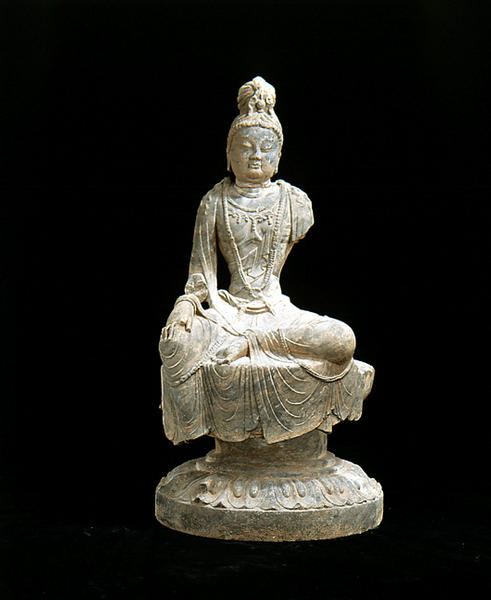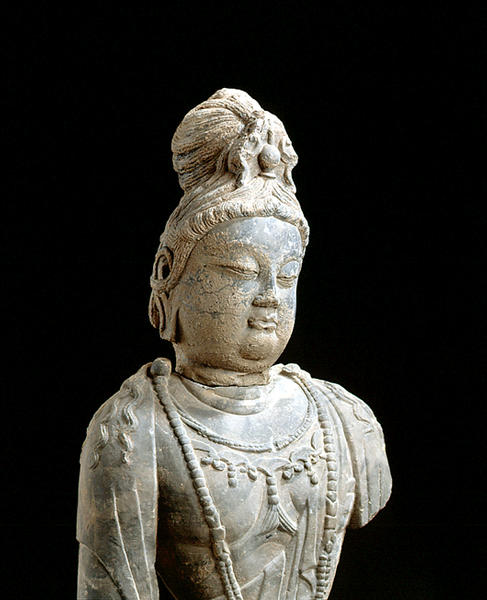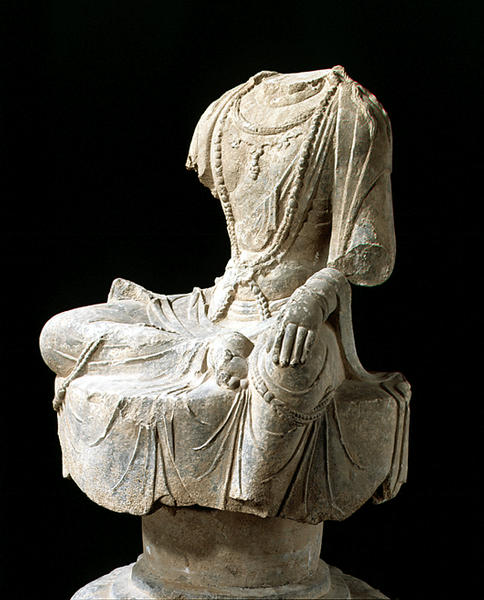Seated Bodhisattva with One Leg Pendent
- Excavated from the Fengxiansi Temple Site
- Tang dynasty
- Limestone
- H-90.5
- Longmen Caves Research Institute
Catalogue Entry
Limestone/ Excavated from the Fengxiansi Temple Site, Tang dynasty/
Overall H. 87.5 cm; Fig. H. 57.0 cm/ Longmen Caves Research Institute
Originally this figure, from top of head to bottom of base, was carved from a single block of stone, but it had a break across its neck and waist when it was excavated. The head is topped with a large hair topknot decorated on the front with a vase-shaped ornament. The right hand is lowered and rests face-down on the knee. The left leg is bent with foot resting on the pedestal, while the right leg is pendent. The figure sits on a lotus pedestal fitted with a cylindrical pedestal pillar, multi-petaled lower lotus blossom level, and round pedestal frame. The left arm is missing from the shoulder down, and the right foot is also missing. Judging from the protrusion on the lower lotus blossom level of the pedestal beneath the right leg, it can be surmised that originally a lotus stem would have protruded from the pedestal at that point and the figure's right foot would have rested on the blossom end of that stem. The round face has plump cheeks and chin, and overall is filled with a sense of innocence combined with dignity. The body lines flow in splendid proportions from the narrow waist, and the overall figural posture gives a sense of a large, energized space. The thin skirt-like garment wrapped around the image's lower body drapes over the front of the pedestal in a beautifully natural-feeling, though well-ordered, depiction of drapery flow. Overall the figure is a splendid fusion of realism and idealized expression. Another image of the same iconography, but with arm and leg positions reversed, has been discovered (see p. 91, Figure XV), and it is surmised that the two images originally formed a pair. This sculpture was probably carved around the end of the Dowager Empress Wu period, at the beginning of the 8th century.


